The first Lana Del Rey song I loved was the cover of “Video Games” by The Young Professionals. A friend sent me the link one night in July three years ago. “It’s better than the original,” she said. I had never heard the original, but I pressed play anyway, the volume turned low so as not to wake my parents. A clunk: the sound of a coin dropping into a slot. Then the music began, poppy, fast, the minor key full of flavor. The song was the color of a cool summer night.
I was seventeen, about to enter my senior year of high school. During the day I interned at a cancer research lab in New York; at night I sat beneath the blue fluorescence of my desk lamp, trawling mindlessly through the Internet. The summer moved as slow as honey twisting from the back of a spoon. I was sick of high school, sick of the suburbs. Weekends I rode my bike around the familiar streets and cursed each candy-colored house and pesticide-green lawn. Nights the darkness felt bluer than black. Though my friend sent me many different songs, “Video Games” by The Young Professionals became my soundtrack. Even listening to it now recalls those evenings: the occasional sweep of headlights down the road before my house; streetlamp shadows on the neighbors’ siding; ellipsis pauses on Facebook as I waited for people to respond to my messages.
It wasn’t until I was a freshman in college that I finally listened to the original “Video Games.” My first impression was shock: it was so slow. Lana Del Rey’s voice was lower than I expected. Like a vapor, the song expanded to fill the room and the spaces inside my head, and when it ended I felt empty, oddly bereft. And the video, which was a marvel — the overlapping images of joy, danger, beauty, all of it grainy, shaky, pregnant with a kind of voyeuristic memory: the precious, amateurish quality of a stranger’s photographs. It was like nothing I’d ever seen before.
I listened to other songs: “Carmen,” “Ride,” “Young and Beautiful” from Baz Luhrman’s The Great Gatsby, snippets of which had entranced me from the movie trailers. The music, yes, it was addicting. It demanded attention. It was so rich it pushed everything else out of my mind until all that was left was the sound, slow as a sleeper’s breath. But what really drew me to Lana Del Rey was her persona. It was a conflation of girlhood, beauty, sex, death. It was red ribbons tied around long white necks; loose dresses made of lace and silk; suicides more about poetry than about grief. I wrote many stories in which young female characters died and their deaths were lovely; I read books about them; I was hooked on their doe-eyed innocence. And here was Lana Del Rey, who impersonated Marilyn Monroe and Jackie Kennedy, who committed suicide in music videos, who told reporters that she wished she were dead already. She was so, so sad and so, so serious and all of it was so, so beautiful it made my heart ache.
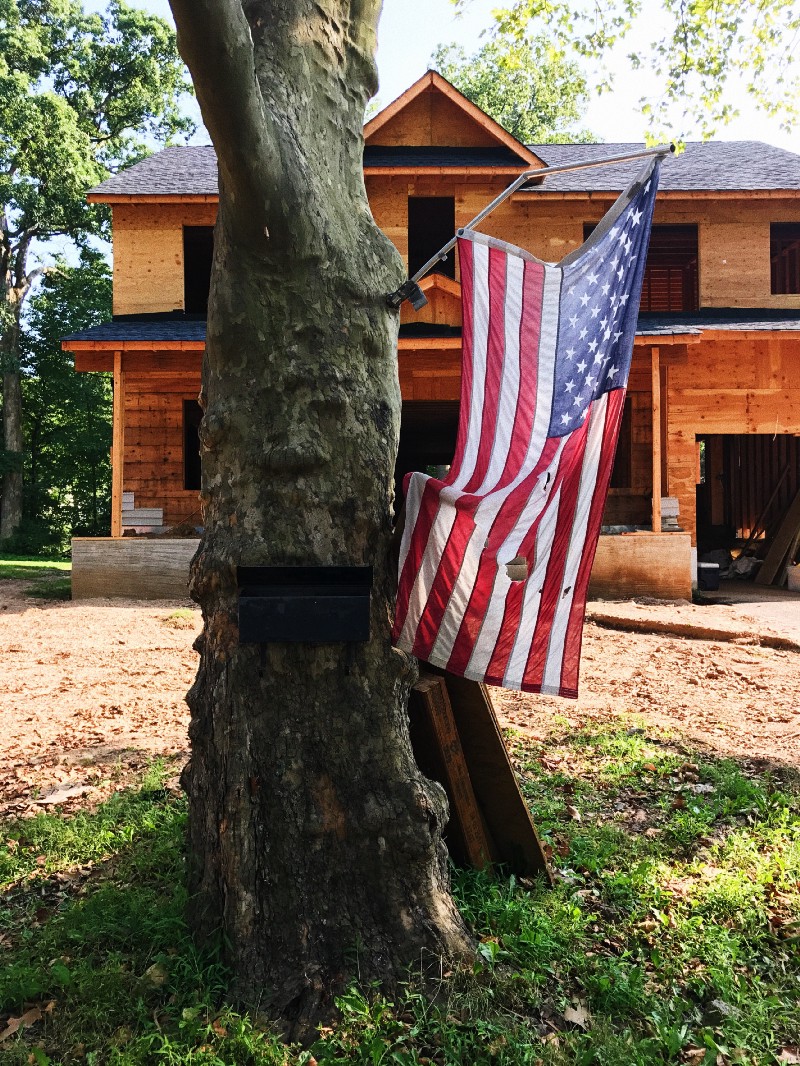
My parents arrived in the U.S. in the late 1980s and early 1990s, my father on the heels of Tiananmen Square, my mother a few years later. They met as graduate students at Arizona State University. My father came to study math with dreams of becoming a professor, but felt his English skills were too poor and picked up a second degree in computer science instead. My mother came to study history, fell into costume design, and now works as a travel agent. They were fascinated by grocery stores and the concept of steak. Their apartment was so dirty that when I was born I was not permitted to crawl, going straight to walking instead. We moved to New Jersey when I was less than a year old: first to Bridgewater, then to Livingston, the suburb where we live now, chosen for its good public schools. My father commuted to New York. My mother stayed home. I attended preschool, learned to speak English, and grew up.
I know little about my family from before these years. Sure, my parents would occasionally tell stories of their childhood to motivate me or my younger sister into working harder or helping with more chores: my father spoke of the attic study space where the temperature climbed to a hundred degrees in the late afternoon; my mother of her daily tending of the family’s chickens. I knew my paternal grandfather worked as a train official and my maternal grandfather taught philosophy at Shandong University. But these stories formed no coherent narrative. They were fragments I assembled and hoarded, hoping they would bloom into something whole, hints of an untouchable other life.
Last year, in an attempt to dig deeper into my personal history, I interviewed my parents for the final project of a course on Asian diasporas. During their interviews, my parents shuffled uncomfortably, their usually strident voices reduced to mumbling and whispering. I’d told them they could speak in Chinese and I would translate with subtitles, but they slipped often into an uneasy English, unaccustomed to the audience of the camera. My father especially resisted talking about Tiananmen Square: I’d wanted to know what happened, whether he was involved, how it affected him. “It’s in the past,” he said. “We don’t have to talk about it. It doesn’t matter anymore.” I marked it down to the same reluctance both parents exhibited in talking about Mao Zedong. He’s long gone, I often said to them, jokingly; nobody will arrest you if you speak badly about him now. But they only shook their heads. It never occurred to me that their reticence was a form of protection.
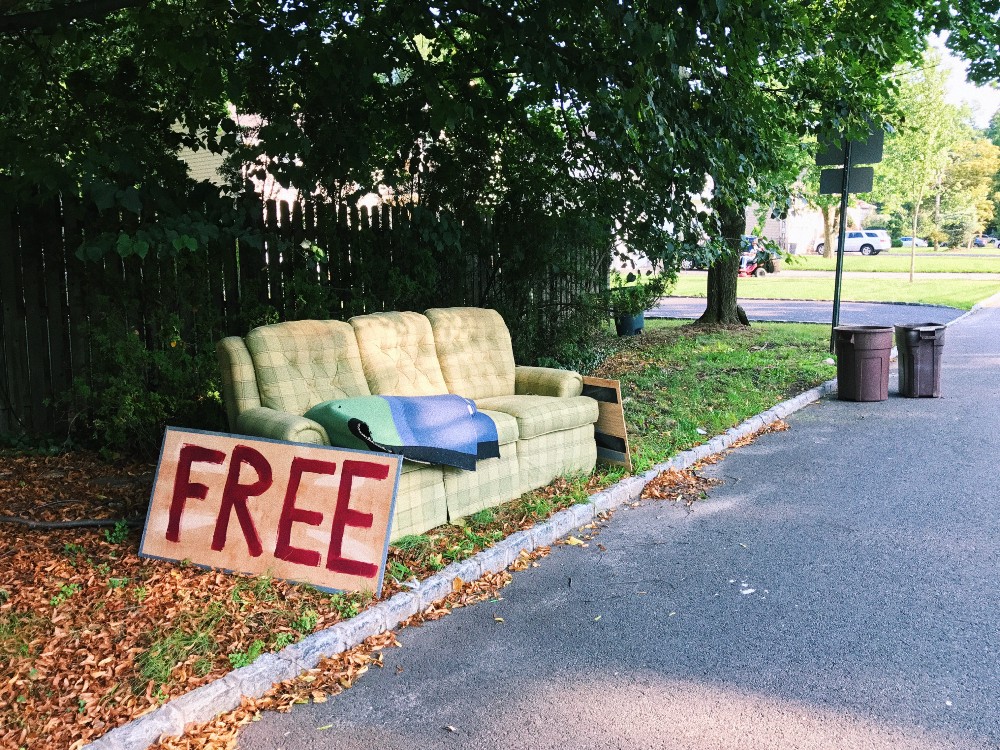
Lana Del Rey was born Elizabeth Woolridge Grant in 1985 to a millionaire father who made his fortune investing in web domains. She grew up in Lake Placid, a small tourist town in upstate New York, with her parents and two younger siblings. By the age of fifteen she was suffering from alcohol abuse; to cope she was sent to a private boarding school in Connecticut. She spent a year after graduation waitressing in Long Island and performing in nightclubs before attending Fordham University to study metaphysics, a branch of philosophy.
In 2007, a year before graduating from Fordham, Grant signed a deal with 5 Points Records and moved to a trailer park in New Jersey. She began working in community service: homeless outreach, drug and alcohol rehabilitation. In 2008 she released an EP titled Kill Kill. In 2010, she released her debut album, Lana Del Ray AKA Lizzy Grant, but pulled it soon afterward, buying rights back from 5 Points Records. In 2011, she released “Video Games” online. The music video, posted a few months later, soon went viral, and not long afterward she signed a joint deal with Interscope Records and Polydor, officially rebranding herself as Lana Del Rey.
Though many music blogs wrote encouraging and positive reviews at the start of her career, Lana Del Rey’s first album (under that name), Born to Die, which came out in 2012, was greeted with rancor, suspicion, and cries of inauthenticity. People accused her of plastic surgery, of sleeping with record label heads to get her way, of buying her fame with her father’s money. They pointed fingers at how quickly “Video Games” had gained traction, followed by a second record deal just months later, far too quickly, far too soon. They called her (on the basis of a bad performance on SNL) a terrible singer. They called her anti-feminist. They called her a fake. The negative reviews were met just as fervently with positive ones, defenses of Lana Del Rey’s character, her voice, her aesthetic. Comment sections even on the New York Timesexploded with polarizing opinions; people loved her or hated her, hardly anyone seeming to sway in the middle.
Meanwhile Born to Die sold 3.4 million copies. Lana Del Rey moved to Los Angeles; she released another EP, Paradise, followed by two more albums, Ultraviolence and Honeymoon. The criticism died away. Reviewers praised her for her growth and her consistency. They sized up the balance of jazz and hip hop and movie soundtrack influences in her music. They analyzed her from a feminist lens (Catherine Vigier, “The Meaning of Lana Del Rey”) or called her the epitome of California (Amanda Petrusich, “Lana Del Rey Is Exhausted”). Her responses in interviews were abbreviated and provocative: she was frank about the reality of her feelings, her influences; occasionally evasive about her past. In 2014 she told a writer from the Guardian, “I wish I was dead already”; the same year she said in The FADER magazine’s cover story that feminism was “just not an interesting concept” to her.
Yet somehow, Lana Del Rey — and the parade of dead beautiful women behind her, from John Everett Millais’s Ophelia to Edgar Allan Poe’s “Annabel Lee” — seemed pliable, a ready site for interpretation. Trying to explain her allure produced an elusive goose chase. I read article after article in which journalists mapped out her beauty, her nostalgia, her darkness. Each seemed to circle around some unreachable conclusion. And for myself, I wondered especially. Though I couldn’t find demographic information on her fans, most of my friends who liked her music were, like me, Asian American. I didn’t want to become Lana Del Rey — far from it. And yet back in middle school I’d frequently discussed with those same friends how we imagined our own deaths. Something was common in how I wanted to see myself and how I saw Lana Del Rey, something unattainable and yet alluring, but what was it? I struggled through an interpretation of femininity that wavered between white modesty (Ruth Yeazell) and Asian ornamentalism (Anne Anlin Cheng); considered Freud’s concept of the death drive; wondered whether it was as simple as admitting that Lana Del Rey’s appeal transcended racial boundaries. None of them seemed right.
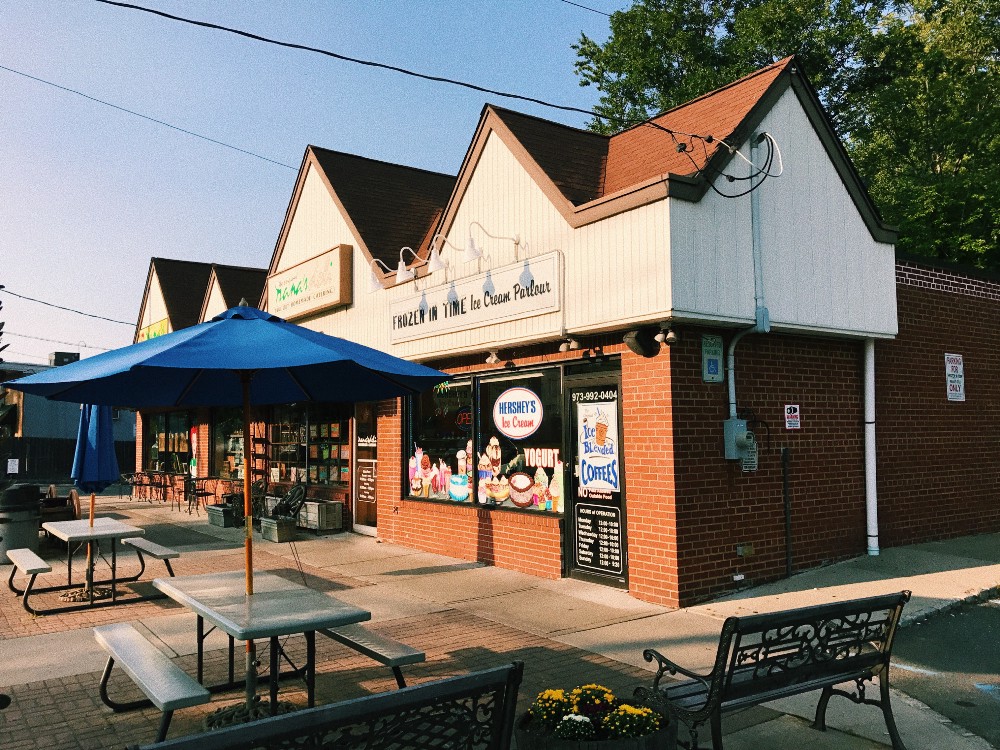
Last summer, I attended a language program in the south of France. Some weeks after I returned, my family took a road trip to Boston for a weekend: a brief excursion together, since both my younger sister and I had work during the week. We arrived in the city around noon, parked the car, and walked to a small park filled with flowers and ducks and teenagers playing Pokémon Go. We wandered around, looking at the willow trees bordering a pond, the bronze statues of American heroes perched proudly on horses. I felt oddly anxious, like we were being watched. Other Asian families — clearly tourists from out of the country — walked around carrying cameras and speaking to each other in Chinese or Korean. I wondered if we looked like them. Did other people in the park see us and group us with the foreigners? Did they know we were American, too? I spoke too loudly to my sister, in English; I looped my arms affectionately around my parents’ necks. We’re different, I wanted to shout. We’ve belonged here for more than twenty years.
I’d never felt the need to prove my membership in America before. But France had changed something, had made me cautious. People shouted at me on the street: “ni hao,” “chinoise.” I felt on display. My host family was white; in their pristine house I was timid and found excuses to stay in my room, though they were kind to me, hospitable. I was relieved to return to America, where I could open the door of the refrigerator for a drink of water without feeling like a thief.
Of course this story is nothing new. You could say, maybe, that it’s one of a series of moments in which I became racialized, in which my identity as an Asian American came to mean something beyond the cultural habits it instilled. Perhaps the real surprise is in how long it took. Growing up, I was as unconscious of my race as it was perhaps possible to be for an Asian girl born to immigrants and raised in America. My hometown, we children said, was “half Asian and half Jewish.” All of the Asian kids were lumped into a cohort without ethnic tags. Some of the Jewish kids were called “jappy,” an offensive term that originally stood for “Jewish American princess” but eventually lost its usefulness as an acronym and was instead applied to any white person with brand-name clothing, chemically straightened hair, bleached teeth, spray-tanned skin. People stuck to their groups, though border-jumpers existed — Asian girls who wore liberal amounts of makeup and drank and postured in photos like the white girls did; white boys in polo shirts and khakis who played cards at lunch and did well in their classes and were christened “honorary Asians.”
It was the way things were, and I didn’t question it. Nobody I knew cared about the fact that I was Asian. If people pulled at the corners of their eyes in elementary school or sang insulting rhymes, I’ve long since forgotten. Near the start of my freshman year of high school, one teacher mixed up the names of two white boys. When they corrected her, she apologized, “I’m sorry, but you white boys just all look the same!” She never confused the Asian students.
After graduating, I read an opinion piece by a friend in the class below me in which she claimed to have wished she was white. I congratulated her on its publication, but privately I was shocked. Wishing to be white, like the desire to find a culture-bridging identity, or the struggle with racist name-calling, were themes that appeared in young adult novels, not realities from our sleepy, silent, liberal town. It wasn’t that they weren’t real, of course, just that they weren’t a part of our lives. What I saw of the Asian American experience — the easy, unquestioned coexistence of my and other bodies; the way my slippage between languages was considered normal, common — wasn’t something I saw represented in popular media. But it didn’t matter to me. I considered it banal. Much more interesting was my teenage angst: drifting apart from friends, crushing on boys, getting into college. I thought I was intellectual; I was interested in death. I knew nothing about death. The people in my life who had died were grandparents I hadn’t seen since I was very young. Almost anything bad that happened in my town could be covered with money; I never heard about girls getting pregnant or getting abortions, though looking back I’m sure both happened; I never heard about people getting busted with drugs.
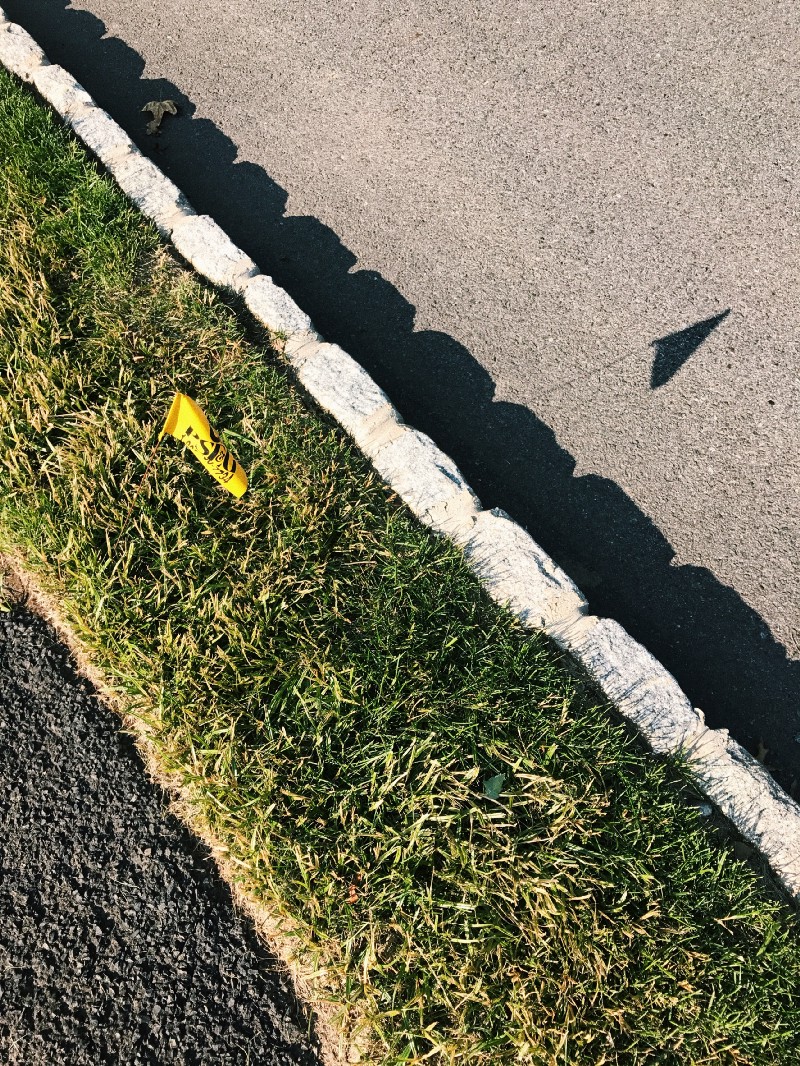
On the album cover of Lust for Life, released this July, Lana Del Rey smiles with all of her teeth. The picture is startlingly clear, capturing the shine of her locks with an almost artificial gleam: evidence of the digital age. In a white lace dress, with daisies in her hair, it’s the first time she’s posed for an album cover with a smile, and though many have remarked on how much happier she seems, the cover looks eerie to me, some haunting blankness in her eyes.
Lust for Life, as has been hashed and rehashed in the hundreds of reviews that have been posted since the album came out, both affirms and departs from Lana Del Rey’s usual message and iconography. In an interview with Pitchforkpublished a few days before the album’s release, the singer repudiated her earlier remarks against feminism. “Women started to feel less safe under this administration instantly,” she said. “Now, when people ask me those questions [about feminism], I feel a little differently.” She said she would no longer use the American flag as her background at concerts (she’d prefer static). In her lyrics, she cites North Korea’s missiles, blesses America’s women, references hope in the midst of war.
But the past is still there, overlapping the present like a double exposure — Woodstock and Coachella, John Lennon and Sean Lennon. In a series of photographs shot by David LaChapelle for Flaunt magazine, Lana Del Rey appears like a specter of the 1970s: gripping a red hymn book in front of a church choir, dressed all in white, a pleated cape hanging from her shoulders like angel wings; as a ribboned and strapped beauty queen in a ruffled magenta gown, waving at crowds from a tasseled parade float; standing over a lace-edged table runner in a wedding dress stained by a blood-like splash of wine. Though visually she belongs to the world of the photos, she doesn’t quite seem to fit in. It’s easy to pick her out from the other people in each picture, who look faded and distant, like part of the background, while she stares coolly, almost menacingly, at the camera.
The past, like death, is a site of intrusion. It has already happened, so it is easy to overwrite, to make over into a kind of ideal present: cherrypicked for the memories that are convenient, filtered through the lens of nostalgia. The past has pathos. Existing there makes you authentic; it means you have history; you can’t be a stranger if you’ve been here for so long.
Sitting with a friend in her kitchen one night, we discussed what it meant to see the world from an Asian American perspective. “I think Asian Americans aren’t sentimental,” she said. “But white people, for instance, are sentimental about everything.” I’d agreed. But then, to be sentimental requires having history to be sentimental about — looking to the past as though it could have been as good as what you might hope for from the future. And to be Asian American, to be the child of immigrants, is to have no past — neither your parents’ past, nor even the past, really, of other Asians in America. All of that historical pain traces no direct line from the past to the present. It belongs to different waves of immigration, to different ethnicities within the cohort of Asian America; for it to have political value means to consciously absorb it, to accept it as pain we still have a duty to shoulder.
What Lana Del Rey does so brilliantly — what Jeffrey Eugenides did in The Virgin Suicides, or Richard Yates in Revolutionary Road, or Sam Mendes and Alan Ball in American Beauty — is a transmutation of sites that, in the public imagination, are born of sentimentality, safety, banality. Pretty girls are pure. Suburbia is safe. For them to be shown otherwise adds a new dimension to the narrative: maybe horror, the way that clowns or dolls can become frightening when they are only relics of childhood; maybe profundity, as when Pip sees Estella after many years and finds her with a greater charm after suffering an abusive marriage, or when Tess of Tess of the D’Urbervilleschanges, post-rape, “from a simple girl to complex woman.” Lana Del Rey’s allure is partly a reimagining of history, a siphoning of past darknesses that rewrite what we remember, or want to remember, of those eras: she recalls the cults of the 1970s rather than the bell-bottom jeans, JFK’s assassination of the 1960s rather than free love. She sings “Happy Birthday, Mr. President” in black and white at the start of “National Anthem”; knots shaky paparazzi footage into “Video Games”; allows herself to be fucked over a 1970s pinball machine in “Ride.” She transforms even sweet memory into the sour wresting of loss. After all, Lana Del Rey is a pretty white woman. We believe in the stability of her innocence. On her, pain can do nothing but make her more beautiful.
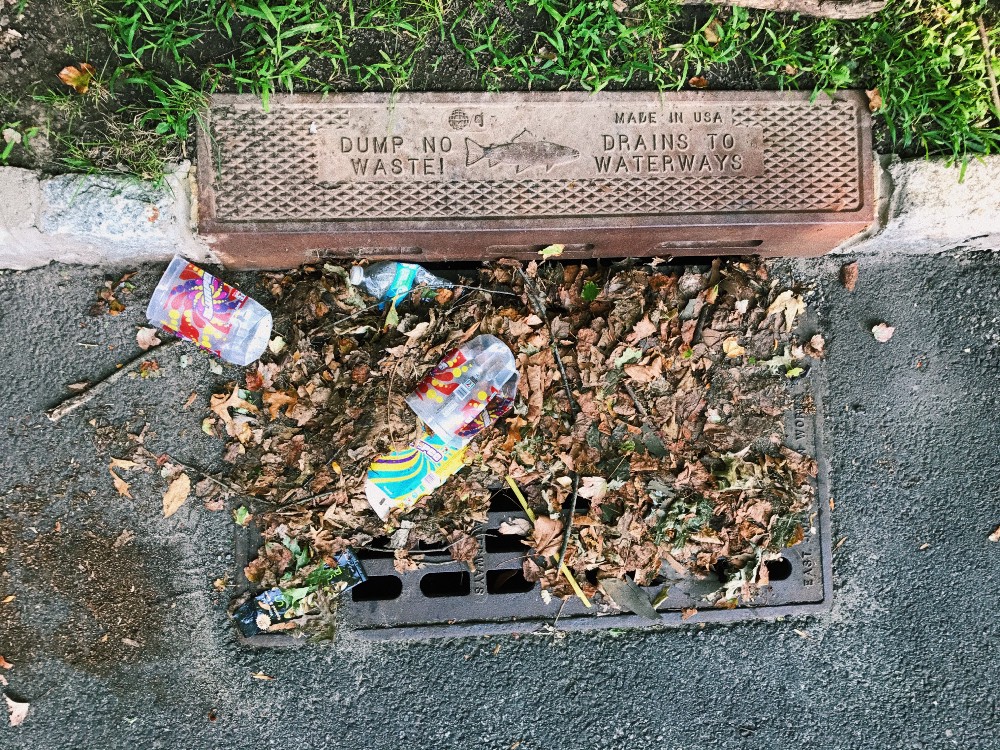
A year ago, a man in my town, the neighbor of a friend, was murdered. I didn’t read about the murder in the news; I only heard about it because I saw my friend soon afterward, on a rare night when our schedules coincided, the night before I left for my language program in France. The neighbor, my friend had told me some years earlier, was a pervert: he sat all day on a lawn chair on his screened-in porch, wearing only a bathrobe. I’d been incredulous; my friend was casual, even amused. Perhaps he’d gotten used to the sight, the disruption of surveillance every time he wanted to play basketball with his brother in the driveway. Perhaps it didn’t matter to him because what was there to see in his body, skinny, angular, moving with the bony grace of adolescence? We met that evening in the local diner, the night turning the windows into mirrors for our broad, pale faces, the pink walls, the neon tubing. Oh yeah, he said, spearing a piece of waffle. Remember my creepy neighbor? He was murdered a couple weeks ago. I stared at him and demanded details, but my friend didn’t know why it happened, or how, and even afterward, when I looked up the incident, I found only a few sparse sentences in the local newspaper.
It wasn’t the first time the illusion of safety I found in my hometown was disrupted. This spring, a junior at the high school committed suicide — the first time I can remember something like this happening in my town, though the event, considering my high school’s history of competition, couldn’t have been unexpected. My dad mentioned it while driving me home from college (“Someone at LHS killed themselves”) and then never brought it up again. My sister whispered it to me one night, months later: “Did you know that someone at LHS killed themselves?” She explained that they’d muttered it on the announcements one morning and offered the guidance counselors to those who wanted to talk. I asked her if she knew him. “No,” she said, “but one of my friends was friends with his brother. She was really sad.”
Other incidents must have happened throughout my childhood, instances I’ve long since forgotten. But by all appearances these tragedies soon scabbed over. Livingston sank easily beneath the monotony of the everyday. Perhaps this is the meaning of privilege: the completeness with which I can live under the illusion of safety.
Yet to be Asian American is to live with a malleable identity, easily manipulated by other people to suit their needs. When Vincent Chin was beaten to death with a baseball bat in 1982, his murderers received an improbably light sentence (three years of probation and a fine of $3000) on a charge of manslaughter: their innocence in the case was not only expected, not only presumed, but legally upheld, while Chin’s was implied to be meaningless. When, this summer, Donald Trump dragged Asian Americans into the debate over affirmative action, suggesting that they as well as white students were discriminated against by the policy, it was another transmutation of Asian American identity to suit white needs: from that of the perpetrator to that of the victim.
But for a long time, I didn’t recognize those reconstructions as distortions, only manifestations of expected injustice; I didn’t believe that my own identity held, in the eyes of others, the same flexibility. The ground under my feet — thanks to my parents, who never speak of their pasts, who make enough money for us to live more than comfortably, who chose to move here, to this pretty suburb, where Asian Americans are not just integrated but, by all appearances, accepted — is rarely, if ever, pulled out from beneath me. Maybe this is why so many Asian American families operate on the premise of working hard and keeping your head down. Here, I can look around me and see Asian American families with trim lawns planted with rosebushes and pinwheels, cars buffed to a shine parked in their driveways, trampolines and pools dug into their backyards, and know that the creation of the illusion of safety is more than possible for me — so possible, in fact, that I can live believing in its completeness, in its closeness to reality; so possible that I can forget it is only an illusion.
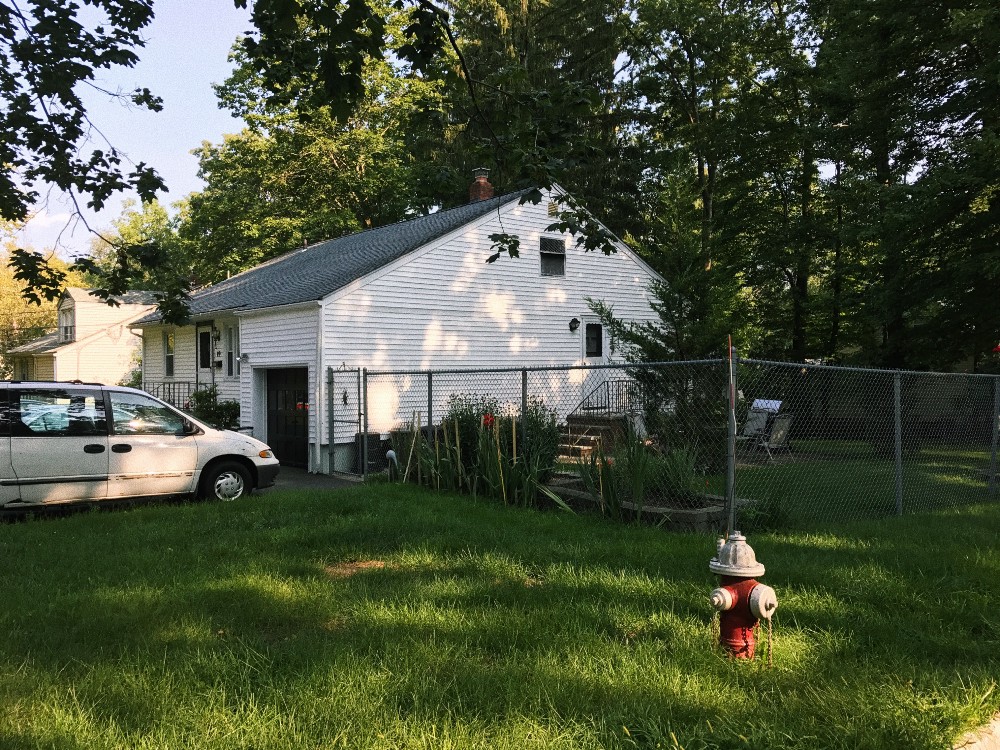
But I have to keep looking back; I have to reread the past. Every friend I mention in this essay is Asian American. Last semester, while conducting interviews for an oral history project on Asian American identity, several people mentioned to me that they’ve never felt as comfortable around white people as they did around other Asian Americans. We treated it as a joke, put it down to the fact that with other Asians there’s some common ground: we all knew, for instance, to take our shoes off inside the house. We wore slippers in our dorm rooms. Swiffered the floor religiously. But our self-imposed segregation was built from more than banalities.
No, I never believed I was white because of my family’s socioeconomic status, never believed I could become white, never wanted to become white. I knew I was Asian American. I didn’t want to scrub from my body or from the eyes of others the fact that I was Asian American. Being Asian American, I believed, changed nothing about who I was or what I wanted to become. From where I stood, it seemed obvious: of course my success, my pain, my hard work, my dreams were as real and as deserving of empathy and possibility as anyone else’s. When I strived to do well in school, to get into a good college, it was because my success was also my parents’ success, proof of my love for them, proof that they had survived and survived well; I was complicit in no agenda.
Leaving home to start over elsewhere is to discard the past for the future. If you have no past, you cannot be implicated in anything; you feel safe, you believe that what you see when you watch yourself is what others see when they watch you. When this is true — when the images, overlapped, produce no disjuncture — it is the definition of innocence. To leave home is to believe that your innocence has been refreshed. Growing up in Livingston meant that I accepted as truth the illusion that innocent was how others saw me. Any cracks that appeared I ignored or put down to other causes. A teacher of mine once admitted that she had a student who claimed receiving anything less than an A on her report card meant getting beaten. The student was, of course, implied to be Asian American. This was two years after Amy Chua published Battle Hymn of the Tiger Mother, a book that generated a buzz in my town, a book I hated without reading because I worried it would leave the wrong impression, because I didn’t want to believe it could be true. The teacher gave me a long, searching look. The question she seemed to be asking: And what was I supposed to do? I didn’t know what to say.
More insidious was the new calculus teacher hired when I was a senior. She’d come to Livingston from an inner-city school, a fact she never let us forget. Every day, before starting her lesson, she would lecture us on how privileged we were, how college-crazy, how her inner-city students had struggled in ways we’d never have to. Our class was almost entirely Asian American, and at first we went along with it. But by the middle of the year she’d begun to regularly accuse us of cheating. The fact that several students got full scores on a take-home exam was proof that we used outside resources, not proof that we were smart, that we’d worked hard, that we’d mastered the material. When that December I broke down in her classroom after school because of the impending arrival of early action decisions, she stared at me impassively over her desk, said I had nothing to worry about, then told the class the next day about my tears. It didn’t matter to her that she’d witnessed a private moment; that my stress encompassed more than my own ambition; that my pain had been, if not as threatening, maybe, as the pain of her other students, then at least just as real. No: I, and the other Asian American students, deserved no sympathy, only suspicion.
These moments are the ones that, looking back, make me wonder how much our acceptance into our town’s culture was genuine. Our suburb has 27,000 residents and two Chinese-only churches. A friend recently told me that the reason why the students with the top ten highest GPAs in the class were no longer permitted to sit on stage during graduation with the valedictorian and salutatorian and members of the student council was because it was seen as promoting a competitive culture: “which we all know,” she wrote, “is how white people feel when none of the children sitting on stage are white.” How much did we spend our childhoods living in a racial bubble, segregated not by choice but by a recognition of our alienation? How much of our sense of safety was granted because it wasn’t seen as threatening? And most of all — how much did we buy into that sense of safety because, surrounded by the debris of material success, we didn’t know how to feel otherwise?
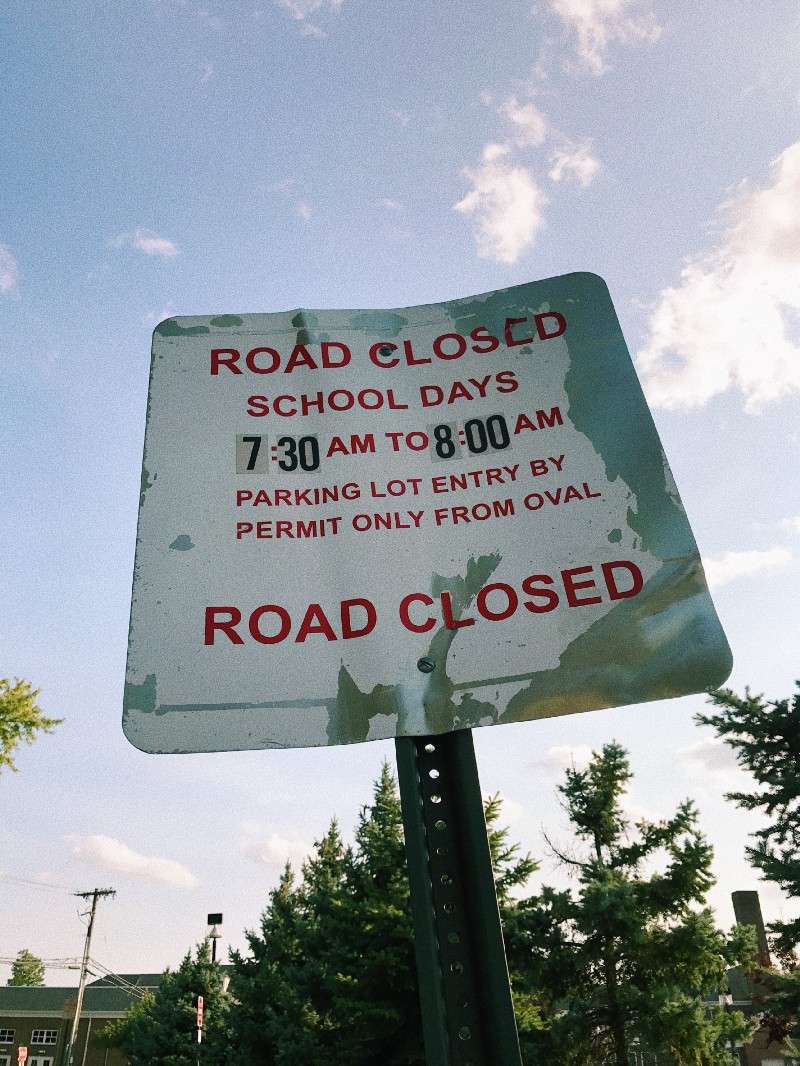
August, New Jersey cloaked in a woolen heat. Lying on the bed in my dim bedroom, I scrolled through Lana Del Rey’s Instagram: lately, a mash of concert clips, show announcements, professional photographs. Lana Del Rey announced most of her performances via video. “Hi guys,” she liked to start them. Her voice was quiet and just breathy enough to call attention to its register. The videos were bad quality, filmed via iPhone. She seemed always to be alone. Sometimes, behind her, was a glimpse of a chandelier, a row of shoes, a white wall. Taken together her Instagram was a mess of intimacy: Lana Del Rey sang along to her own songs or someone else’s, juxtaposed studio recordings with grainy aerial views of highways or waving American flags, posted the same Vanity Fair cover three times in a row. She wore false eyelashes and sweatshirts. She seemed simultaneously to care about her image and to be beyond caring.
In her essay “Grand Unified Theory of Female Pain,” Leslie Jamison defines a subcategory of women’s attitudes toward their own hurt as “post-wounded”:
What I’ll call “post-wounded” isn’t a shift in deep feeling (we understand these women still hurt) but a shift away from wounded affect: these women are aware that “woundedness” is overdone and overrated. They are wary of melodrama, so they stay numb or clever instead. Post-wounded women make jokes about being wounded or get impatient with women who hurt too much…. The post-wounded posture is claustrophobic: jadedness, aching gone implicit, sarcasm quick on the heels of anything that might look like self-pity.
I read the essay in 2014, when it was first published in the Virginia Quarterly Review, and it felt like a revelation. Jamison called for women to own their feelings. She demanded the necessity of expressing female pain. In an earlier piece I wrote about Lana Del Rey, I’d co-opted Jamison’s phrase. The singer’s persona seemed like the epitome of post-woundedness — in her music and videos, she flung herself into relationships with married men, she drank too much, she sanctioned domestic abuse. Yet Lana Del Rey almost always looked as if she didn’t believe in the drama of her own existence. As if she were beyond it. When she shimmied her shoulders, I cringed.
A year later I read Jenny Zhang’s “How It Feels” in Poetry magazine. The point of the essay was, ostensibly, the same as Jamison’s: the importance of feeling. Zhang, too, sanctioned angst and melodrama; she wrote about suicide and dying young. She described the “bland, unexciting-to-describe, low-grade” depression that made it difficult for her to get out of bed even to use the bathroom. Yet nothing in “How It Feels” applied to Lana Del Rey. Somehow, it couldn’t: it was too sincere, it cared too much. I read it over and over. I bookmarked it on my computer, printed out a copy to keep on my desk. Though the piece wasn’t explicitly related to being Asian American, its call to arms felt closer to what I knew than Jamison’s. Zhang’s family — her mother rubbing her earlobes to help her fall asleep — reminded me of my own.
For pain to be aesthetic, it must be far away. In Lana Del Rey’s music, pain is reduced from the real to the illusory, the profound to the surface; it becomes decorative, an ornament, a beautiful inevitability. Like all performers of post-woundedness, her detachment from her pain becomes stirring: it seems to imply a depth we can’t fathom. What I wanted of Lana Del Rey — that beautiful pain, the beauty I sought when I wrote story after story about girls diving into empty pools, slitting their wrists in the bathtub, burning down their houses — could, I think, never be mine. To be Asian American is to lack the luxury of distance. No: when innocence is an illusion, when your safety is one you must work every minute to retain, when your life is tangled up so profoundly in the network of your family’s survival, how can you ever give yourself up to abandon?

Comments powered by Talkyard.